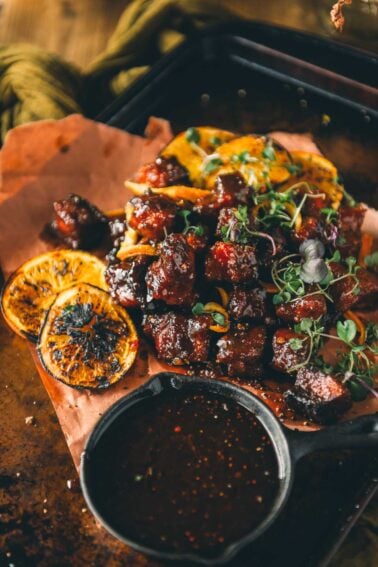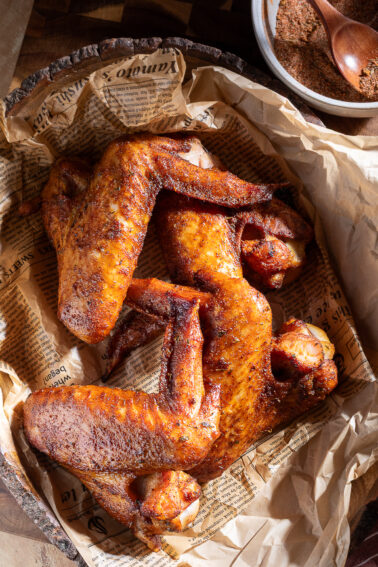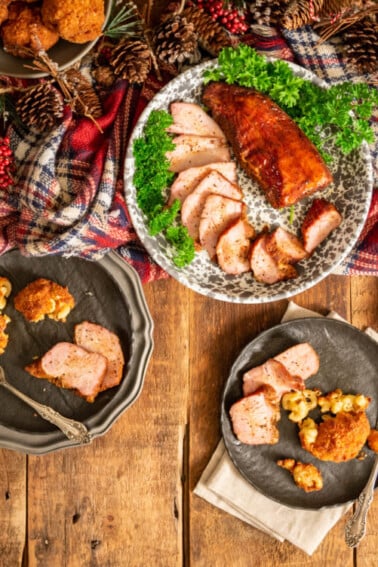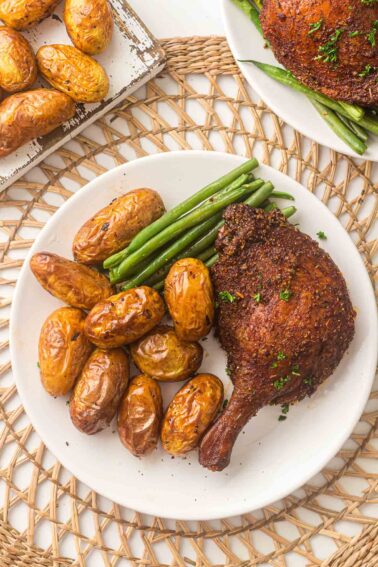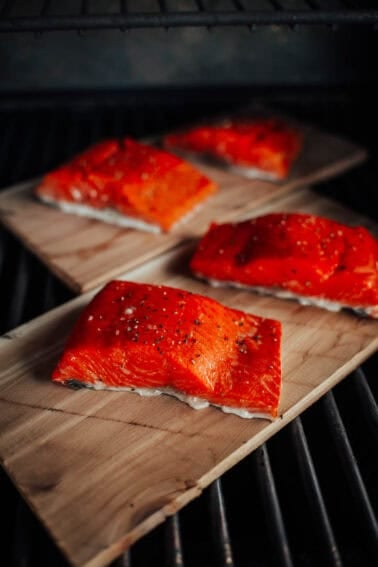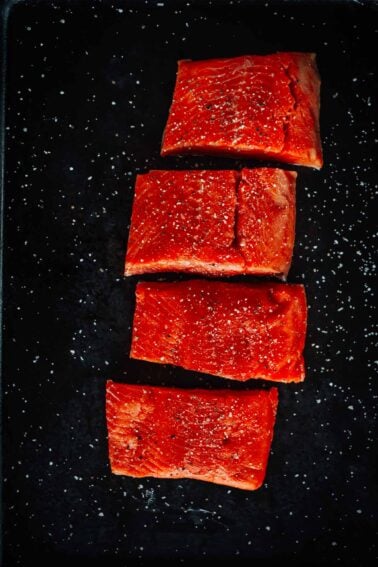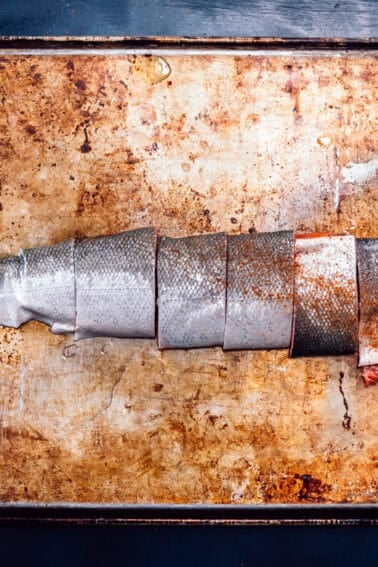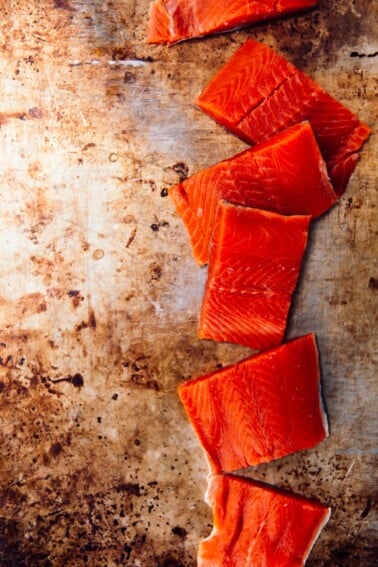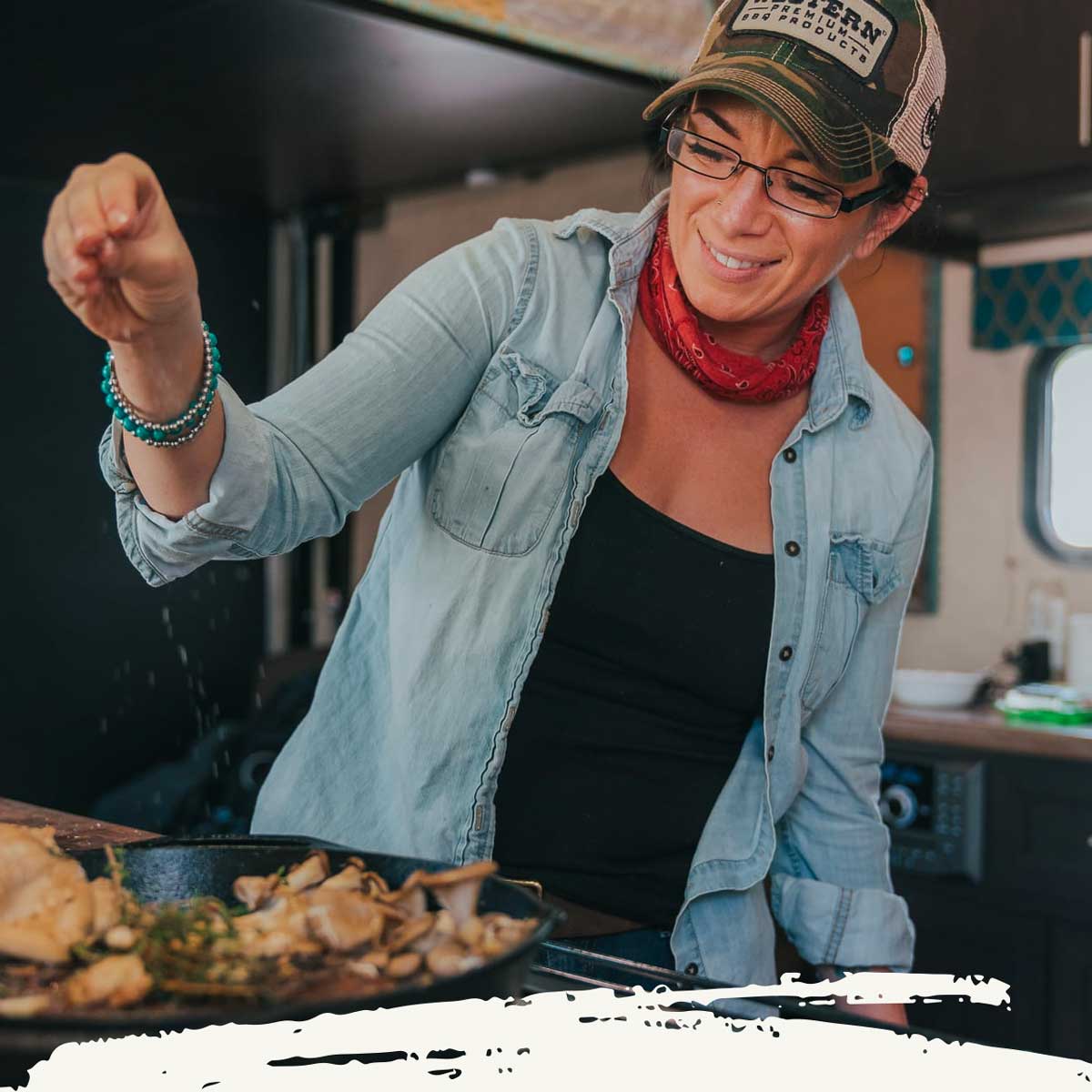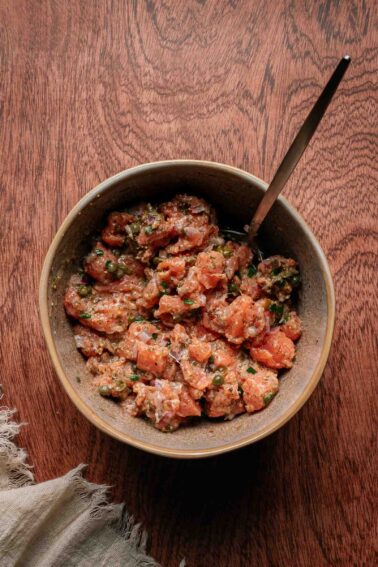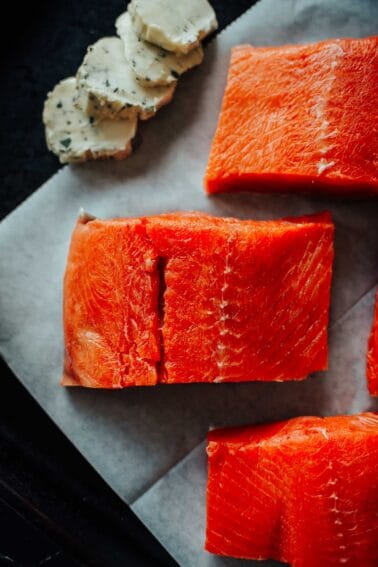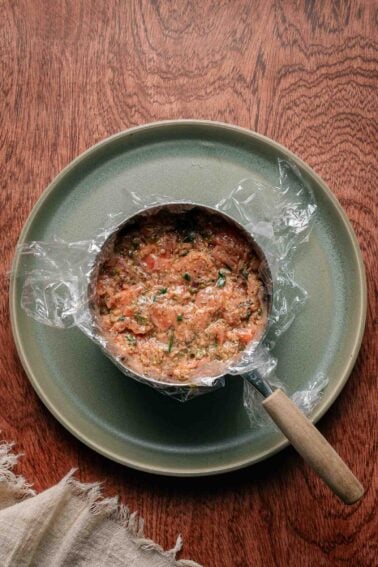Smoking wood is the key to adding incredible depth and complexity to your grilled and smoked dishes. From the rich and robust flavors of mesquite to the delicate and fruity notes of cherry wood, understanding the different types of smoking wood is essential for mastering the art of barbecue.
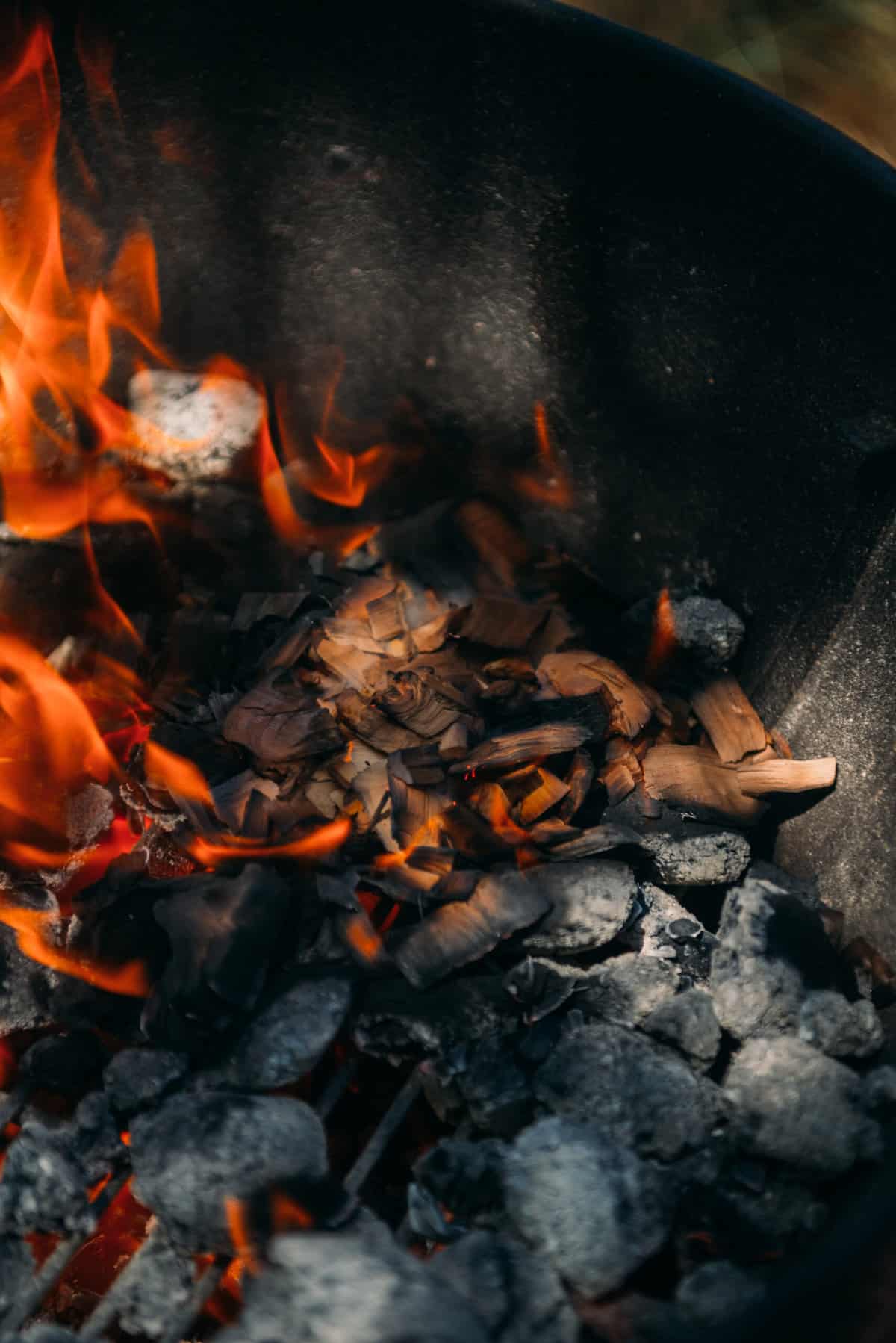
Table of Contents
- TL;DR Summary
- Wood Chips, Chunks, or Logs?
- Popular Smoking Woods Flavors
- Pairing Guide (downloadable):
- Matching Woods with Specific Meats
- Temps for getting the best smoke flavor:
- Our favorite smoking recipes
- Avoiding Common Mistakes with Smoking Wood
- Sourcing Quality Smoking Wood
- Storing and Maintaining Your Smoking Wood
- More helpful grilling guides
- FAQs
The art of barbecuing is deeply intertwined with the choice of smoking wood, as it plays a crucial role in enhancing the flavors of your meat. Different woods impart distinct flavor profiles, making selecting the perfect smoking wood for a delightful BBQ experience essential. This guide will explore various types of smoking woods, their unique flavors, and how to pair them with different meats. So, let’s embark on this smoky adventure and elevate your BBQ skills!
TL;DR Summary
- Understand popular smoking woods’ characteristics, flavors, and suitability for BBQ.
- Match specific meats with appropriate woods to achieve optimal flavor in your dishes.
- Combining different wood types and exploring various smoking techniques to create unique smoke profiles.
Wood Chips, Chunks, or Logs?
Selecting the right wood form for your smoker is essential for achieving the perfect smoke flavor. Not sure what grill to use? Check out our guide for the best grills. Authentic smoke flavor can be added to meat in various forms, such as:
- chips
- chunks
- pellets
- Logs (splits)
Wood chips are smaller pieces suited for electric smokers, charcoal grilling, and for smoking on your gas grill. Wood chips also burn the fastest due to their small size and need to be replaced often to maintain consistent smoke, and are ideal for short cooks like when you’re grilling hamburgers. Place chips directly on the charcoal or in a smoker box or foil packet above the direct heat.
Chunks are for charcoal grills and produce a robust smoke flavor for a long time, perfect for big meaty recipes like smoked beef ribs or smoked pulled pork. Add the chunks directly to the charcoal or on the edges. Allow the dirty smoke to burn off before adding your food.
Pellets are compressed wood designed specifically for pellet grills and smokers. Pellets are used as the fuel source filling the hopper of your pellet grill. But grilling pellets can also be used to infuse smoke flavor via a pellet tube on a gas or charcoal grill. For added smoky flavor, we use charcoal pellets in the hopper with wood chunks directly on our grill grates on recipes like smoked chuck roast.
Splits work best with offset smokers and low and slow cooking for hours of even heat and good flavor for larger cuts of meat, like lamb barbacoa.
When selecting smoking wood, consider the type of smoking recipes you intend to prepare and choose the wood that best complements its flavor profile.
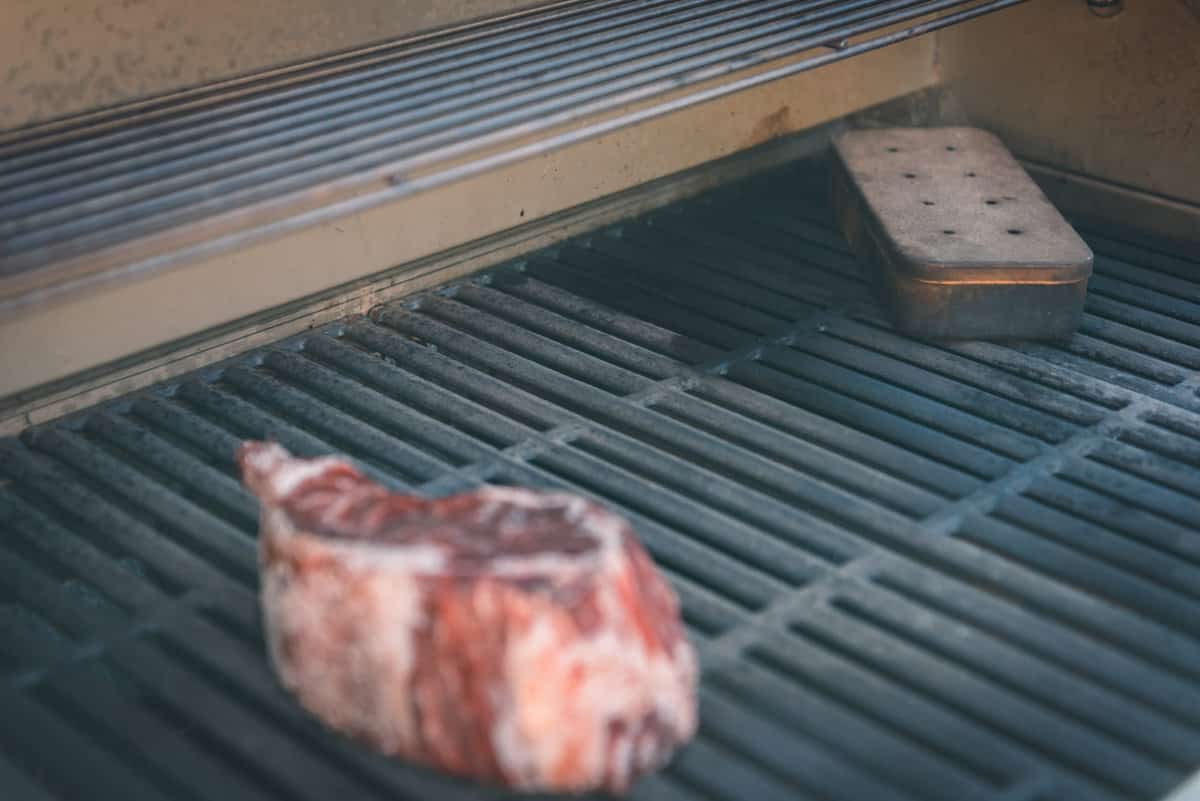
Popular Smoking Woods Flavors
Oak, hickory, mesquite, pecan, maple, and fruitwood are among the most popular smoking woods, each offering a unique flavor profile to enhance your BBQ experience. Popularity waxes and wanes depending on region and availability, making the terroir of barbecue as rich and diverse as the individuals passing down recipes from one generation to the next.
In the following subsections, we’ll explore these woods in-depth, discussing their characteristics and flavors and their suitability for smoking different types of meat.
Oak
Oak is renowned for its versatility and medium flavor, making it a popular choice for smoking various types of meat. Its steady heat and strong, penetrating smoke beautifully complement most cuts of meat, making it our go-to choice when grilling when we don’t want a heavy smoke flavor but still want the taste you can only get with authentic wood smoke.
From coast to coast, you will find different oak varieties, such as white oak, live oak, and red oak. There are even oak chips and chunks made from retired whiskey oak barrels that add a subtle sweet undertone to the flavor of your food.
Pair Oak with:
Hickory
Hickory is often considered the king of smoking woods, and it’s the most commonly used type. It gives red meats like beef and pork a robust and hearty flavor. Hickory is your best bet if you’re looking for an intense flavor profile rooted in tradition. Its signature, bold aroma renders mouthwatering BBQ ribs every time.
Pair Hickory with:
- Beef
- Poultry
- Lamb
- Veggies
Mesquite
Mesquite is the quintessential wood for Texas-style BBQ, imparting an intense, bold, and earthy flavor to the meat. It burns how with an even flame and is most suitable for smoking heavier meats that can handle its intense flavor.
However, caution should be exercised when using mesquite, as its powerful flavor can become overpowering quickly, causing an acrid taste. Always wait for clean blue smoke when using mesquite for the best results.
Pair Mesquite with:
Pecan
Pecan wood provides a mild flavor that’s a little stronger than fruitwoods, but not as strong as hickory or mesquite. It’s good with poultry, beef, pork chops, and cheese. It’s popular among backyard cooks for its nutty, sweet flavor and compatibility with different meats. Pecan wood is primarily used for smoking poultry but can also be combined with fruitwoods to create a harmonious blend of different flavors.
Pair Pecan with:
- Beef
- Veal
- Poultry
- Seafood
- Veggies
- Desserts
- Cheese
Maple
Maple wood is known for its subtle, mild, and sweet smoky flavor, making it an excellent choice for smoking poultry and fish. Maple is also ideal for pairing with other woods, such as alder, oak, and apple, creating a balanced and harmonious blend of flavors without being too overwhelming.
Pair Maple with:
Alder
Alder wood imparts a delicate sweetness similar to fruitwood and is particularly well-suited for smoking seafood and other delicate foods. When smoking fish and seafood, it’s recommended to use smaller chunks or wood chips.
Pair Alder with:
- Seafood
- Veggies
Fruitwoods
Fruitwoods, such as apple, cherry, and peach, offer mild, sweet flavors perfect for smoking delicate meats and seafood. These woods bring out a gentle yet flavorful note when grilling, making them ideal for a variety of foods.
- Apple: Provides a mild, slightly sweet smoke that pairs well with pork, poultry, and fish. And particularly bacon.
- Cherry: Provides a mild to medium smoke that is sweet and slightly fruity, making it an excellent choice for smoking pork, lamb, beef, and dark poultry like duck. It also produces a beautiful color, giving proteins a distinctive red hue. Mix cherry with hickory for a balanced blend of flavors.
- Peach: Offers a slightly sweet mild smoke flavor that works well with pork, poultry, and fish.
These fruit woods can enhance the flavor of your smoked dishes and add a unique touch to your cooking. Try combining fruitwood with oak or hickory for unique flavor combinations.
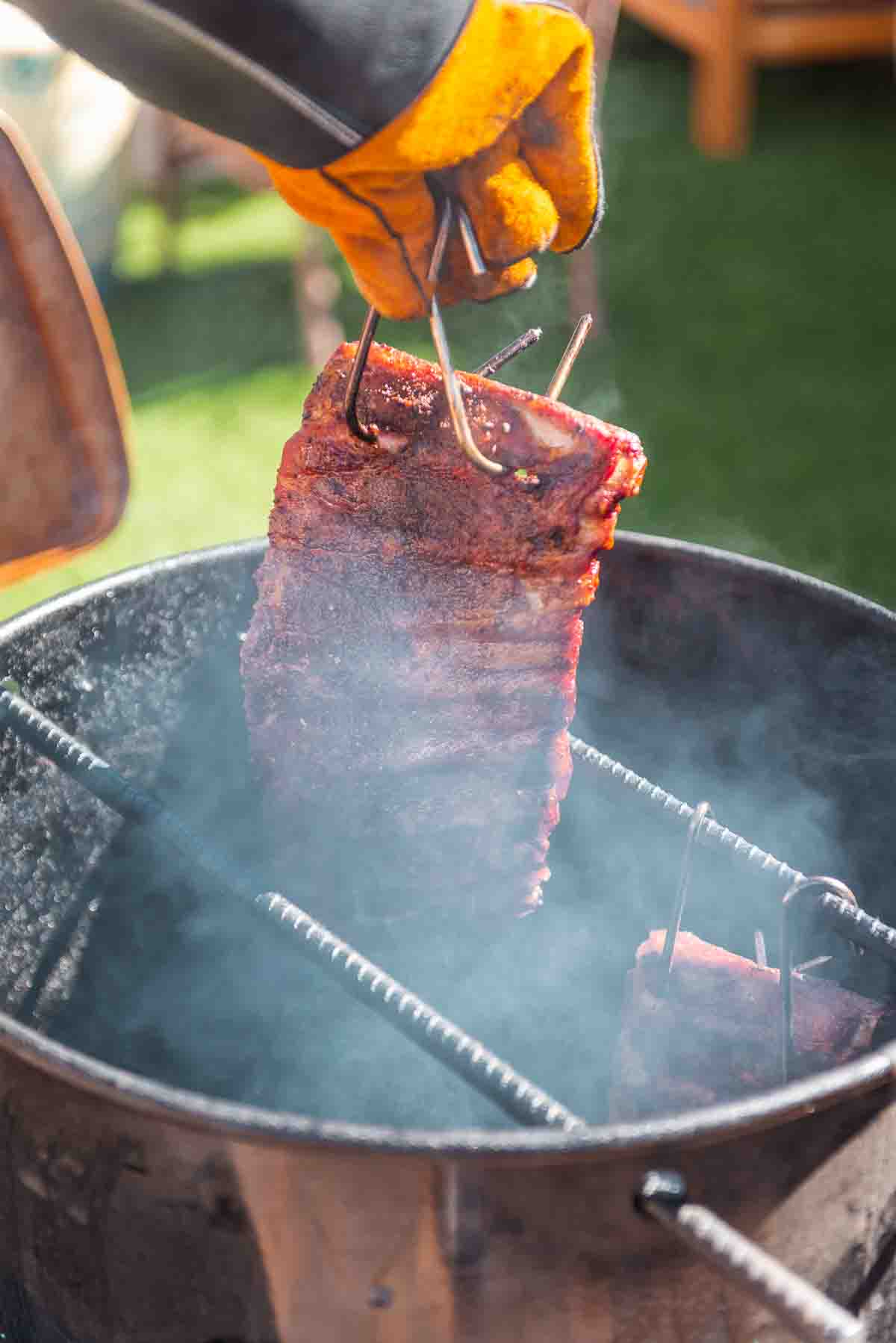
Pairing Guide (downloadable):
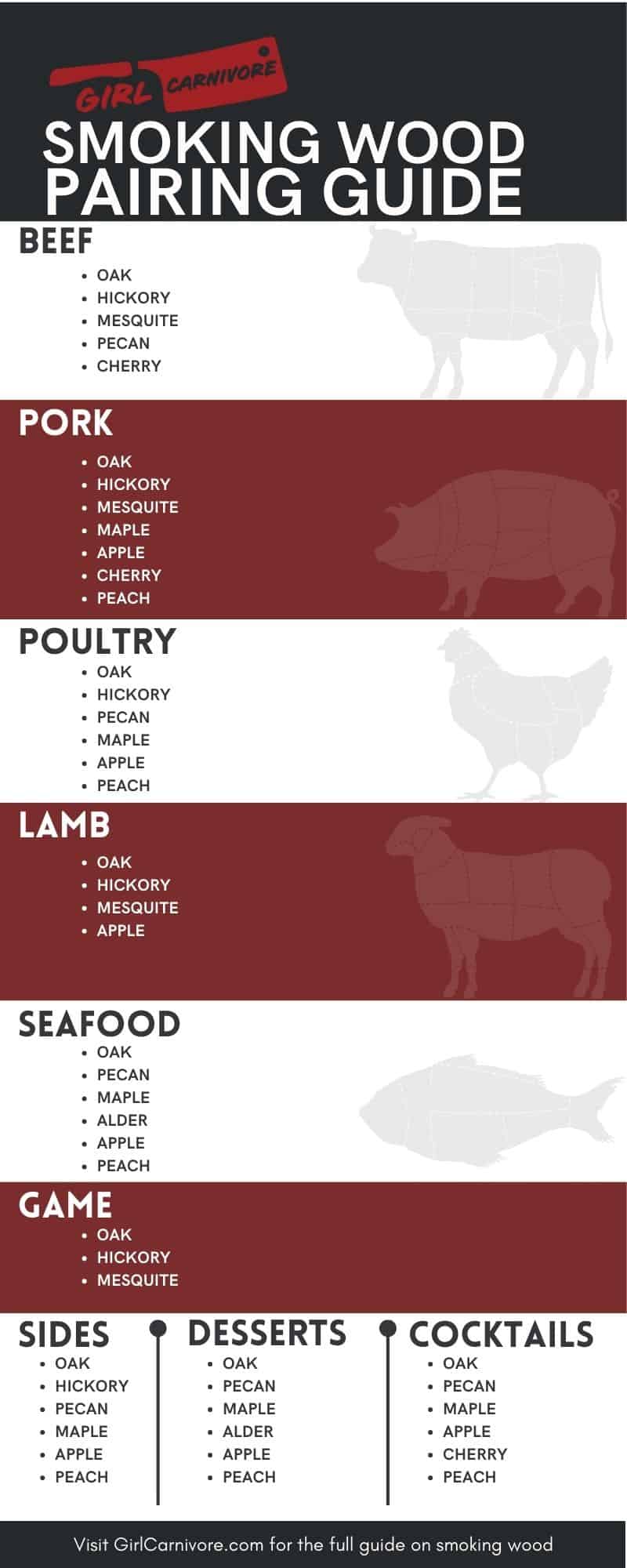
Matching Woods with Specific Meats
Pairing specific woods with different meats can enhance flavors and optimize smoking. Here are some wood options and the flavors they impart.
- Hickory: robust, smoky taste
- Oak: more subdued flavor
- Maple: sweet, caramelized flavor
- Pecan: mild, nutty flavor
- Alder: mild, nutty flavor
“Foods take on smoke differently, depending on their density. Big cuts like brisket and pork shoulder can handle heavier smoke from oak, mesquite, and hickory woods. Seafood and pasta dishes, like macaroni and cheese, are less dense and absorb smoke much faster. They do best with milder woods like pecan, apple, and alder.”
— Christie Vanover, Christie Vanover, Pro Pitmaster GirlsCanGrill, Food Network BBQ Brawl
Understanding the flavor profiles of different woods and their compatibility with various meats is crucial for achieving optimal results. Experiment with other wood and meat pairings to find your preferences and perfect your BBQ skills.
See our guide for The Best Wood for Smoking Turkey to get our tips for the perfect Smoked Thanksgiving Turkey flavor pairing.
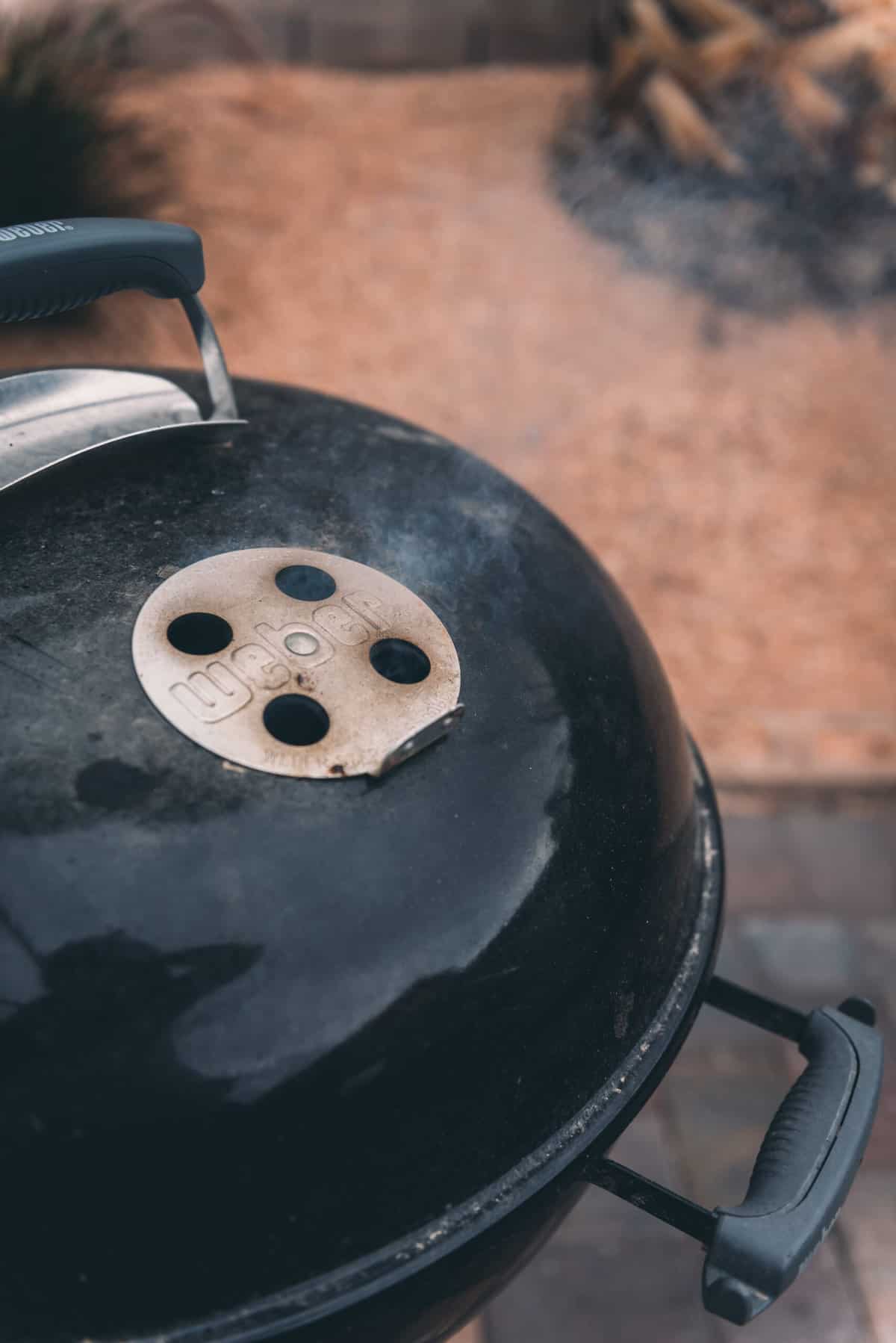
Temps for getting the best smoke flavor:
The ideal temperature for smoking depends mainly on the type of meat you’re cooking, but a general rule of thumb for most meats is to smoke at a temperature between 200 and 225 degrees F.
Here are some guidelines for specific types of meat and the necessary grill temperature:
- Poultry: A slightly higher temperature of 250-275 degrees Fahrenheit for chicken and turkey is usually recommended to ensure the skin gets crispy.
- Pork: For pork ribs, shoulder, or butt, maintain a temperature of 225-250 degrees Fahrenheit for perfectly pulled pork butt.
- Beef: A temperature of 225-250 degrees Fahrenheit for smoking beef brisket is ideal to getting that signature smoke ring and juicy tender meat.
Our favorite smoking recipes
Recipes With Pork
Smoked Pork Belly Burnt Ends with Maple Chipotle Bourbon Glaze
Recipes With Pork
Smoked Maple Glazed Pork Tenderloin
Duck
Smoked Duck Legs
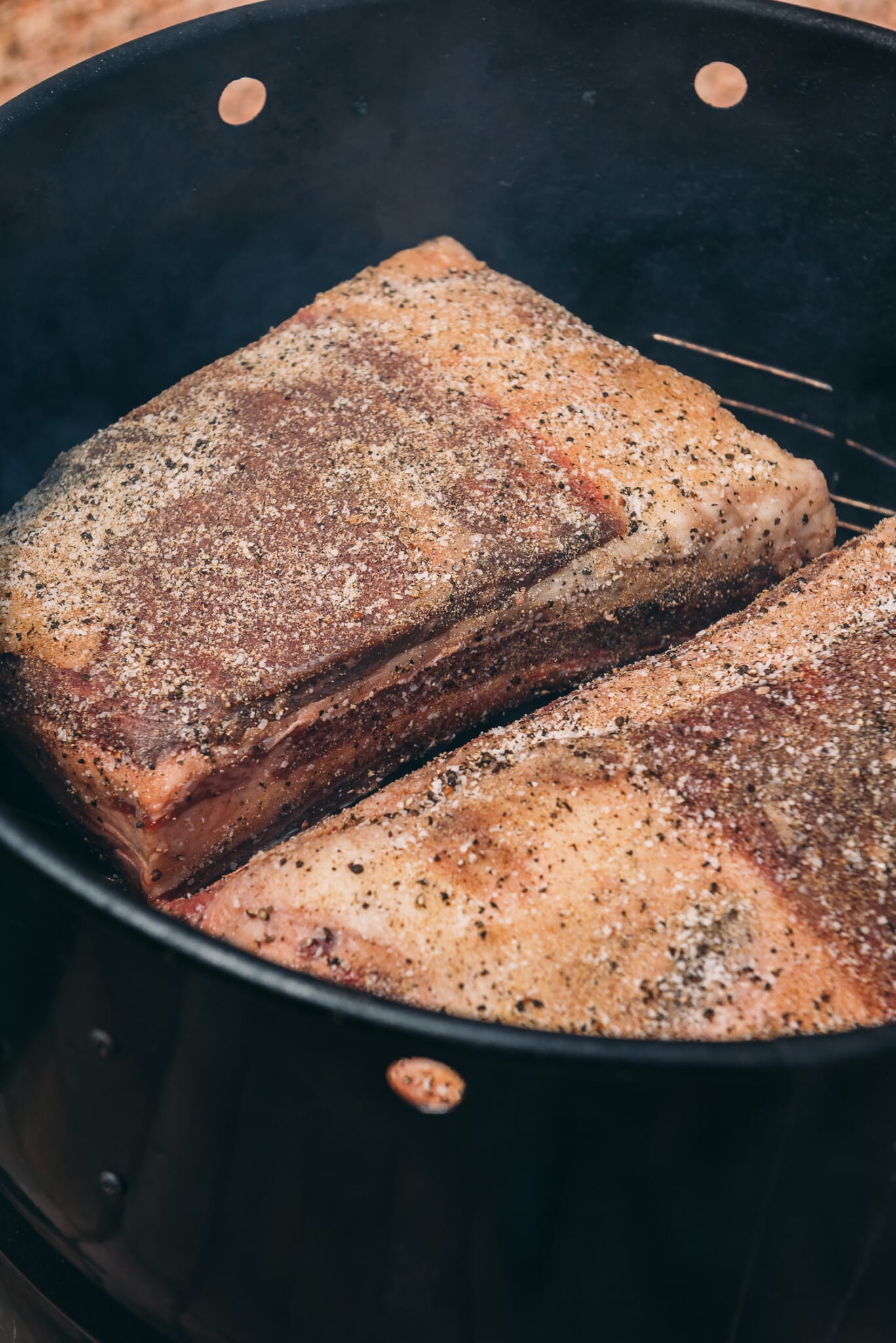
Avoiding Common Mistakes with Smoking Wood
For a great barbecue, it’s essential to understand the common mistakes when smoking food. Wood chips should not be soaked as soaking can produce white smoke and steam, harming the flavor.
Burning green wood that has not or been appropriately seasoned may cause it to burn too hot with organic resins or sap producing off-tastes in your cooked meat. Avoiding these pitfalls will ensure excellent results from your smoked cuisine!
Several common mistakes can hinder your BBQ experience when smoking with wood. Here are some examples:
- Using too much wood – can cause fluctuations in hea and too much smoke, which tastes acrid.
- Selecting an inappropriate type of wood for the meat – see our guide for examples
- Being hasty – adding food before the smoke is clean
“Bbq is just like clothes. If it’s dirty, take it off. If it’s clean, put it in. Everyone, once in a while, may have to do the sniff test.
But seriously, when you see and smell dirty smoke, remove your proteins so you avoid imparting them with dirty smoke. Once you have your fire under control and are rolling clean smoke, you can put them back on.”
— Rasheed Phillips, Pro Pitmaster at Phillips Barbecue Co, Netflix American Barbecue Showdown
These mistakes can lead to an overly smoky flavor, an unpleasant bitter taste, and a charred texture when the grill burns hot.
Another common mistake is employing wet wood. To avoid this, ensure that the wood is sufficiently dried and seasoned before smoking, with a minimum of six months in an area with good air circulation or using kiln-dried wood.
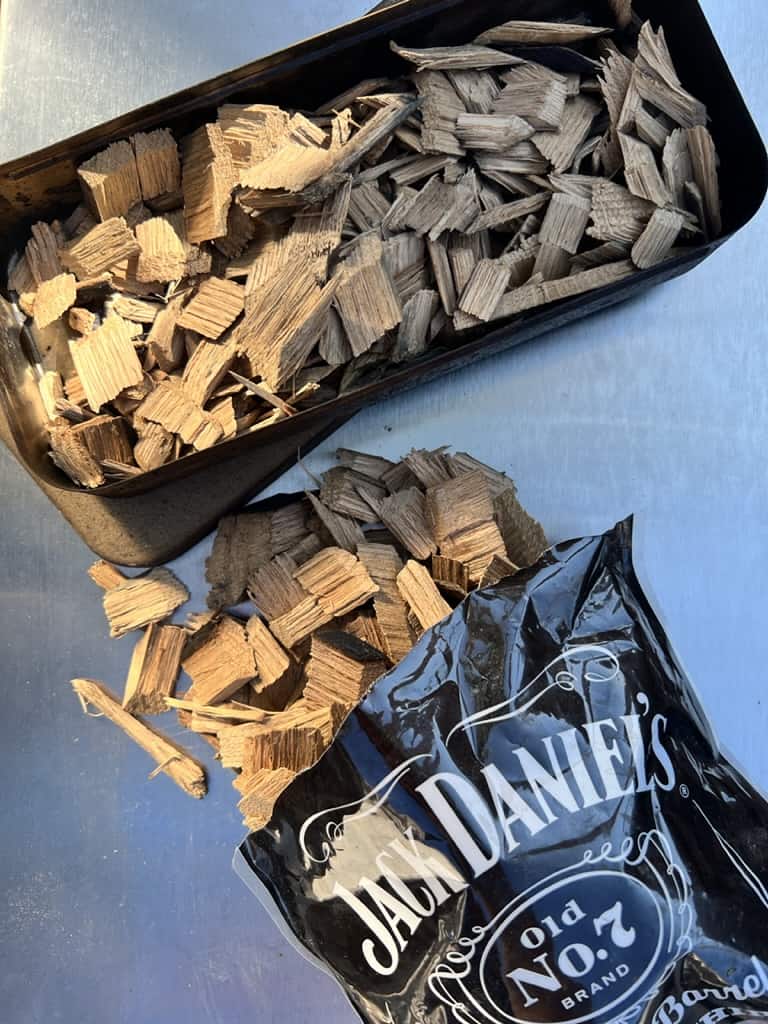
Sourcing Quality Smoking Wood
Sourcing quality smoking wood is essential, as each wood possesses distinct flavor qualities that bolster the flavor of the food. Seasoning the wood, which refers to aging and drying the wood to achieve the desired moisture level for efficient combustion and safe food-grade smoking, is equally important. The recommended time frame for seasoning wood is 6-18 months if air-dried outdoors to avoid acrid smoke when burning. If you’re buying wood chips, chunks, or logs, look for all-natural kiln-dried wood for the best flavor.
Obtaining high-quality smoking wood is essential for achieving the best BBQ results. You can purchase quality smoking wood from wood suppliers such as:
- Online retailers like Cutting Edge Firewood, BBQ Guys, and Amazon
- Hardware stores, like Ace or True Value, grocery stores, and retailers that sell grills, like Walmart, Lowes, or Home Depot.
- Local apple, cherry, or pecan orchards and tree removal companies for hardwoods
Chopping your own wood is another effective way to acquire high-grade smoking wood, ensuring that you have complete control over the seasoning process and wood quality.
When purchasing smoking wood, steer clear of softwoods like pine, redwood fir, spruce cypress – as the sap and flavor aren’t great when combined with grilling and foods. And never use treated wood.
Storing and Maintaining Your Smoking Wood
For optimum flavor and performance from your smoking wood, it is important to practice proper storage and maintenance.
- Keep it Dry: The most important aspect of wood storage is keeping the wood dry. Moisture can lead to mold growth, and wet wood produces a lot of smoke and burns inefficiently. If storing wood outdoors, make sure it’s elevated off the ground and covered to protect it from rain and snow. However, ensure the cover is breathable or vented to prevent moisture accumulation.
- Store in a Cool Place: Store your smoking wood in a cool, dry place like a garage or shed.
- Pest Control: Keep the storage area clean and inspect regularly for pests like termites.
More helpful grilling guides
Cooking with wood is an art, and when done correctly can make your barbecuing experience unique. To perfect the flavors you desire from smoking meat on a grill, choose carefully between different woods, forms, and techniques to avoid mistakes that could ruin all of your hard work. When ready for the meal, simply ignite the smoker using only chosen wood before letting its amazing smells wrap around everyone as they savor their perfectly smoked food delicacy!
In this guide, we delved into the world of smoking woods, exploring their unique flavors, characteristics, and suitability for smoking various types of meat. Understanding the differences between smoking woods and experimenting with different varieties, flavor combinations, and smoking techniques can elevate your BBQ grilling game. So, fire up your smoker, and get to grilling.

FAQs
Hickory and oak may be the most common wood used for smoking, but Maple, Mesquite, Pecan, Apple, Alder, and Cherry are all great options for smoking meat.
To produce smoke from wood, place it on top of some hot coals and let it burn until it is no longer flaming and the smoke runs clear. For chips, this will be almost immediate, while chunks can take up to 5 to 10 minutes, depending on size, type, and how much bark is still attached to the wood.
It is not recommended to use Eastern Cedar, Cypress, Elm, Eucalyptus, Sassafras Liquid Amber Pine, Redwood Fir, Sycamore, or any treated wood when smoking meats and other types of food.
No, soaking wood before smoking is unnecessary as this will hinder the smoke production process. Soaking wood produces steam, not smoke. We start with dry wood when cooking for the best authentic wood-smoked flavor.
BBQ wood chips are the smallest and give off smoke quickly, perfect for shorter cooks. For those longer smokes, larger chunks of wood provide more consistent burning during slow-cooking processes. Logs offer maximum burn time when using large smokers or fireboxes due to their sizeable nature.
Applewood or hickory are great choices for beginners due to their mild, versatile flavors.
Yes, different meats can benefit from different woods. For instance, poultry pairs well with fruit woods like apple wood or cherry, while red meats can handle stronger flavors like hickory or mesquite.
Seasoned wood is dry and lighter in weight, while green wood is heavier and has a fresher smell.
This varies based on your specific grill and the intensity of flavor you desire, but a good rule of thumb is to start with a handful or two of chips or 3 to 4 smoking wood chunks and adjust based on results.
Smoking wood adds a distinct flavor to the meat that can’t be achieved with charcoal or gas grills alone. However, as shown in our guides, you can smoke on your gas grill and charcoal grill with the addition of wood chips.
Control smoke flavor by adjusting the amount of wood, the type of wood, air flow, and the smoking time.
If your smoking wood catches fire, try reducing the oxygen supply by adjusting the vents, move the wood to the cooler side of the grill using long tongs, or carefully spraying a small amount of water onto the flames.
